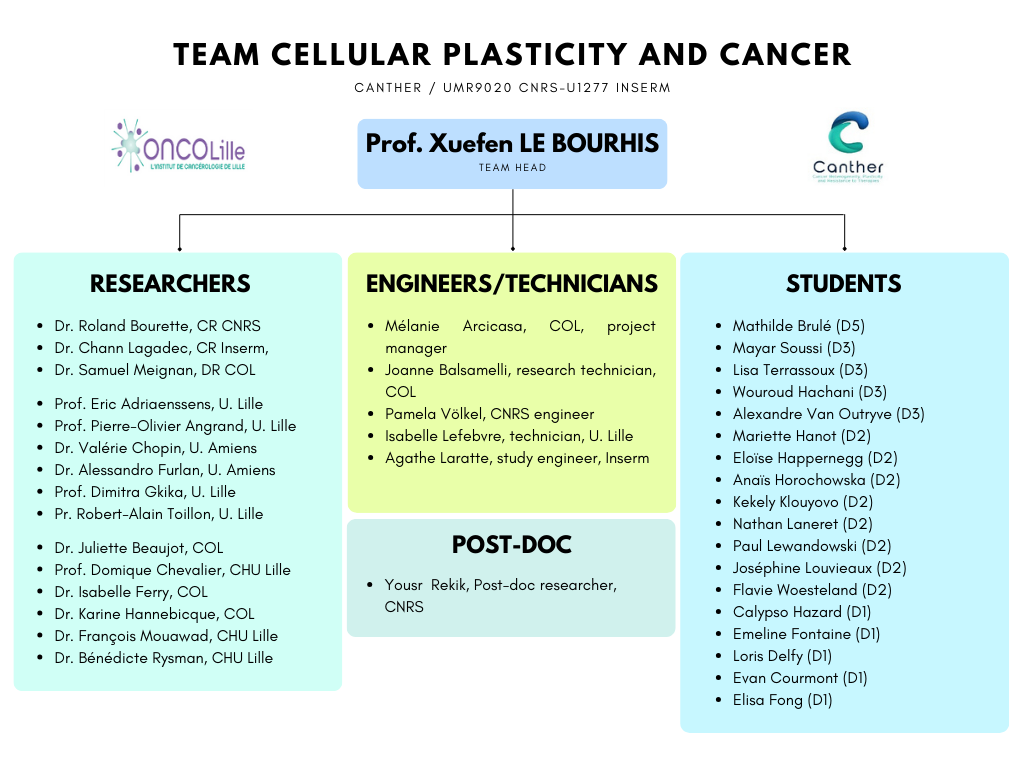
Team : Cell Plasticity and Cancer
NEWS
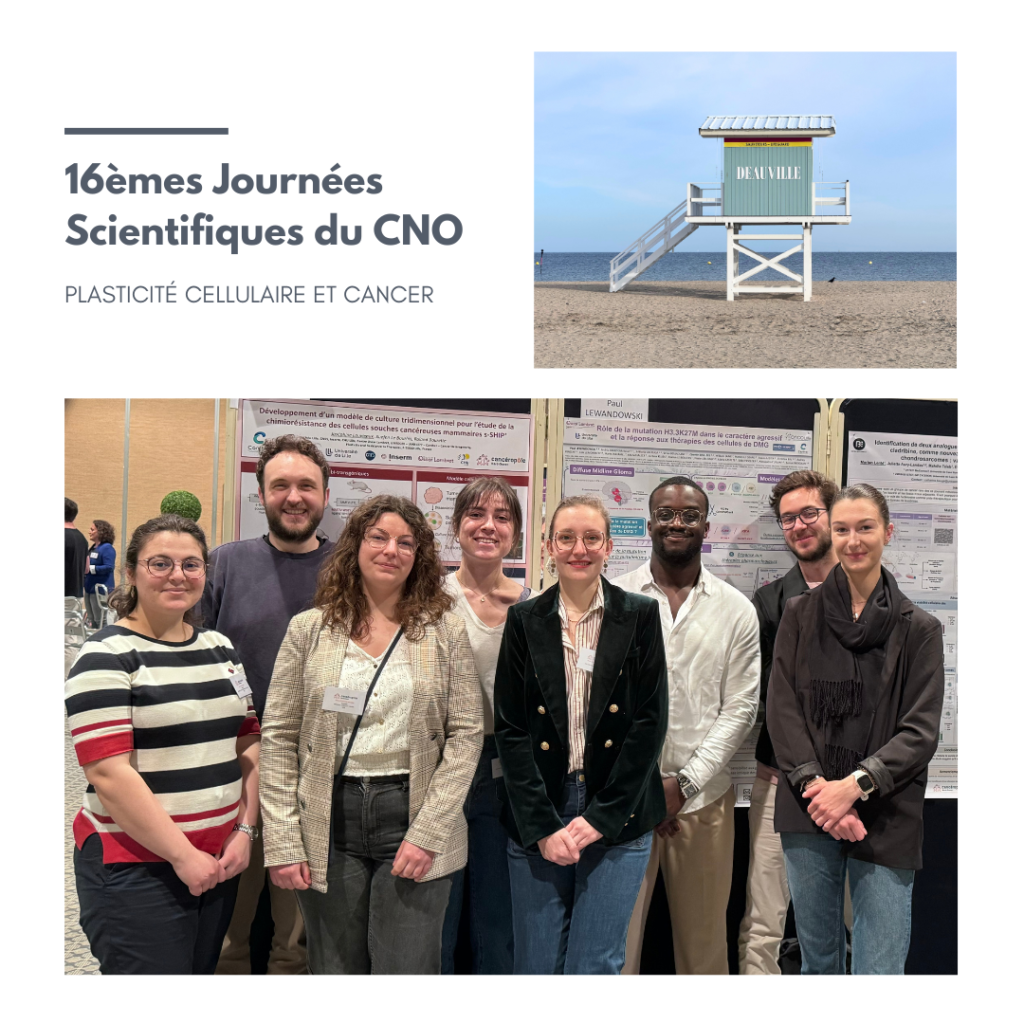
Well done to our thesis students for their oral and written presentations, and for the quality of their work at the 16th Cancéropôle Nord-Ouest Scientific Days.
In particular, we congratulate Anaïs (oral communication) and Paul (poster) on their awards.
(Emeline FONTAINE , Joséphine Louvieaux , Anaïs Horochowska , Mayar Soussi , Calypso Hazard , Alexandre Van Outryve , Kekely B. Klouyovo et Paul Lewandowski )
Our team joins researchers, teacher-researchers, and clinicians alongside technicians, students, and post-doctoral fellows with a single goal: decipher the molecular mechanisms of the plasticity of cancer cells governing resistance to cancer therapies of breast and pediatric gliomas.
Our project combines the complementary and recognized skills of the team members, in particular studies of cell signaling and reprogramming, translational study models, 3D culture models, organs-on-chip and 4D microfluidics, single-cell omics approaches and artificial intelligence in oncogenomics. In addition to local interactions with various Lille teams, the team has developed national and international interdisciplinary collaborations.
Through this fundamental and translational research, our final objective is to discover new markers and/or therapeutic targets and to propose innovative therapeutic strategies for the treatment of breast cancer and gliomas in children.
 | Pr Xuefen LE BOURHIS, University of Lille |
 | Pr Eric ADRIAENSSENS, University of Lille |
 | Pr Pierre-Olivier ANGRAND, University of Lille |
 | Dr Roland BOURETTE, Researcher CRCN CNRS |
 | Dr Valérie CHOPIN, Associate Professor, University of Picardie Jules Verne valerie.chopin(@)univ-lille.fr |
 | Dr Dimitra GKIKA, Associate Professor in Physiology, University of Lille Research : Ion channel role in carcinogenesis and tumour angiogenesis Keywords : TRP channels, calcium signaling, steroid receptors, small GTPases, cell migration, invasion, angiogenesis, endothelium dimitra.gkika(@)univ-lille.fr |
 | Dr Alessandro FURLAN, Postdoctoral Researcher, Centre Oscar Lambret |
 | Pr Robert-Alain TOILLON, University of Lille Web of Science Researcher ID: Q-2286-2018 |
 | Dr Chann LAGADEC, Researcher CRCN, Inserm |
 | Dr Samuel MEIGNAN, Researcher, Centre Oscar Lambret |
 | Dr Juliette BEAUJOT, pathologist, Centre Oscar Lambret, MD |
 | Pr Dominique CHEVALIER, head ans neck surgeon, PU PH, CHU of Lille dominique.chevalier(@)chru-lille.fr |
 | Dr Isabelle FERRY, pediatric Oncologist, Centre Oscar Lambret, MD |
 | Dr Karine HANNEBICQUE, breast surgeon, Centre Oscar Lambret, MD |
 | Dr François MOUAWAD, head and neck surgeon, CHU of Lille, MD-PhD |
 | Dr Bénédicte RYSMAN, head and neck surgeon, CHU of Lille, MD benedicte.rysman(@)chru-lille.fr |
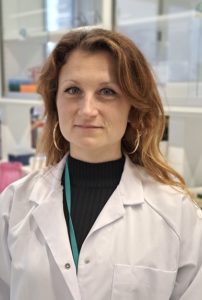 | Mélanie ARCICASA, Research Technician, Centre Oscar Lambret m-arcicasa(@)o-lambret.fr |
 | Isabelle LEFEBVRE, Lille University Technician isabelle.lefebvre(@)univ-lille.fr |
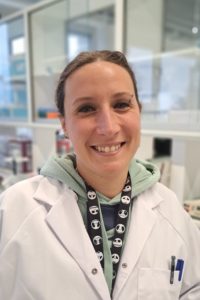 | Joanne BALSAMELLI, Research Technician, Centre Oscar Lambret j-balsamelli(@)o-lambret.fr |
 | Pamela VÖLKEL, Engineer, CNRS pamela.voelkel(@)univ-lille.fr |
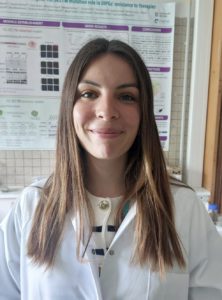 | Agathe LARATTE, Ingénieure d’étude, Inserm agathe.laratte@inserm.fr |
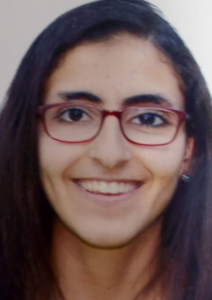 | Yousr REKIK, chercheuse post-doctorante, Inserm |
 | Mathilde BRULÉ (Y5, PhD student) mathilde.brule.etu(@)univ-lille.fr |
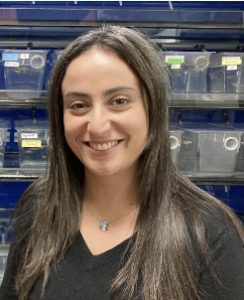 | Wouroud HACHANI (Y3, PhD student) wouroud.hachani.etu(@)univ-lille.fr |
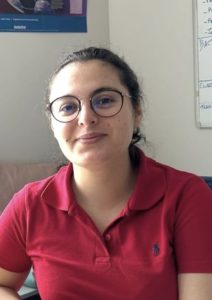 | Mayar SOUSSI (Y3, PhD student) mayar.soussi.etu(@)univ-lille.fr |
 | Lisa TERRASSOUX (Y3, PhD student) lisa.terrassoux.etu(@)univ-lille.fr |
 | Alexandre VAN OUTRYVE (Y3, PhD student) alexandre.vanoutryve.etu(@)univ-lille.fr |
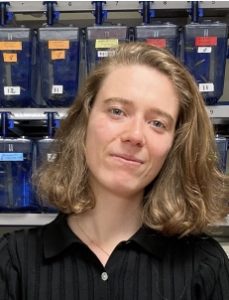 | Mariette HANOT (Y2, PhD student) mariette.hanot.etu(@)univ-lille.fr |
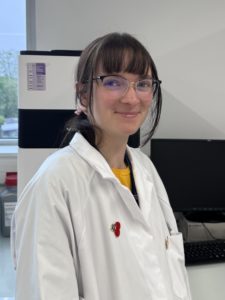 | Eloise HAPPERNEGG (Y2, PhD student) eloise.happernegg.etu(@)univ-lille.fr |
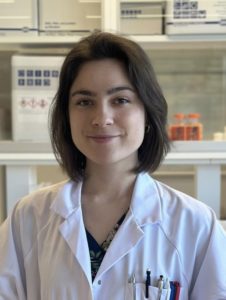 | Anaïs HOROCHOWSKA (Y2, PhD student) anais.horochowska.etu(@)univ-lille.fr |
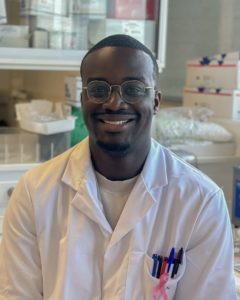 | Kekely KLOUYOVO (Y2, PhD student) kekely.klouyovo.etu(@)univ-lille.fr |
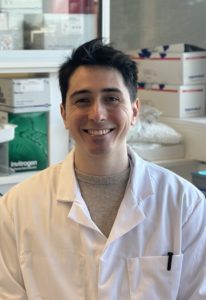 | Nathan LANERET (Y2, PhD student) nathan.laneret.etu(@)univ-lille.fr |
 | Paul LEWANDOWSKI (Y2, PhD student) paul.lewandowski.etu(@)univ-lille.fr |
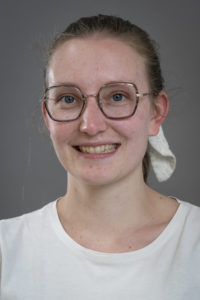 | Joséphine LOUVIEAUX (Y2, PhD student) josephine.louvieaux.etu(@)univ-lille.fr |
 | Karine HANNEBICQUE (Y2, PhD student) k-hannebicque(@)o-lambret.fr |
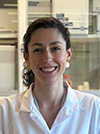 | Flavie WOESTELAND (Y2, PhD student) flavie.woesteland.etu(@)univ-lille.fr |
 | Calypso HAZARD (Y1, PhD student) calypso.hazard.etu(@)univ-lille.fr |
 | Emeline FONTAINE (Y1, PhD student) emeline.fontaine.etu(@)univ-lille.fr |
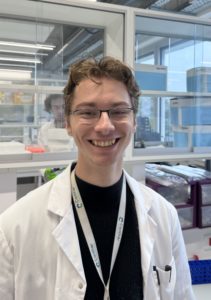 | Loris DELFY (Y1, PhD student) loris.delfy.etu(@)univ-lille.fr |
 | Evan COURMONT (Y1, PhD student) evan.courmont.etu(@)univ-lille.fr |
 | Elisa FONG (Y1, PhD student, 10/2024) elisa.fong.etu(@)univ-lille.fr
|
Our project is based on two models, breast cancer and pediatric brain tumors.
Breast cancer cells plasticity and metastasis
One of the approaches developed by our team is the study of the molecular mechanisms involved in cell reprogramming that can be targeted to improve the effectiveness of treatments. We were thus able to highlight the role of pro-inflammatory cytokines, released after radiotherapy, in the reprogramming of breast non cancer stem cells into cancer stem cells (CSCs). Thus, neutralization of these cytokines reduces the post-treatment CSC enrichment and prolongs the lifespan in a mouse model. In parallel, we demonstrated that the expression of cytokines and their receptors could be used as predictive markers of a response to radiotherapy in a cohort of 10,000 patients.
We are currently interested in the epigenetic mechanisms involved in the re-expression of “stemness” proteins and in the implication of the phenotypic reprogramming in tumor dormancy and metastatic development, in collaboration with physicists from IEMN and LIMMS. We will also use home-made new molecular tools, cellular and animal models to monitor and to characterize CSCs and the reprogramming process. For example, we have established persistent triple negative breast cancer cell lines after treatment with chemotherapeutical agents in order to better understand the behaviors of persistent cancer cells during tumor dormancy and metastatic development. In addition, we have combined C3(1)Tag transgenic mice, reproducing breast tumorigenesis, with transgenic mice expressing the CSC marker s-SHIP fused with GFP, in order to isolate and characterize stem cells during breast tumorigenesis and to dissect molecular mechanisms involved in the control of stemness, cell phenotype plasticity and tumor resistance to treatments.
In addition to these aspects, our team is a pioneer in the demonstration of the role of NGF (Nerve Growth Factor) and its precursor, proNGF in breast cancer development. Our recognized expertise in the field of membrane receptors and their downstream signaling pathways has enabled us to demonstrate recently that NGF induces the formation of TrkA/CD44 receptor complexes, while proNGF induces the formation of TrkA/EphA2 complexes. Concomitant inhibition of TrkA and EphA2 has been shown to decrease cerebral metastatic formation. Our goal is therefore to study the underlying mechanisms of receptor complexes formation and their downstream signaling pathways in order to target them to reduce/prevent metastasis.
We have been the first to demonstrate the role and mechanisms of action of the long non-coding RNA H19, and of the miR-675 it generates, in breast cancer. Currently, we are interested in different mechanisms of action of lncRNA such as the “miRNA sponge” effect, the “scaffold” effect of protein complex and the targeting of chromatin-modifying complex on DNA. In addition, we are studying the role of H19 and its miR in the various phenotypes associated with the emergence and development of breast cancer, including cell proliferation, survival, migration, invasion, EMT and metastasis formation. These studies are carried out in breast cancer cell lines in vitro as well as the C3(1)Tag murine tumorigenesis model and in zebrafish model.
Epigenetics and resistance to treatments for pediatric gliomas
Resistance to classical treatments and the associated mechanisms are also major issues in the management of pediatric diffuse gliomas located in the brainstem. However, the very particular profile and the dramatic prognosis of these tumors require their own investigation. In this context, and based on the shared molecular tools and knowledge in our team, we are carrying out work specifically on the resistance to treatments of DIPG (Diffuse Intrinsic Pontine Glioma), and this through 3 complementary in vitro approaches: the study of the H3.3K27M mutation impact on resistance to treatments, the screening of compounds without a priori / repositioning of drugs, and the development of a “DIPG on a chip” microfluidic model.
In parallel with these in vitro approaches, we are developping innovative transgenic zebrafish models in this topic. The zebrafish is a vertebrate model increasingly used in biomedical research because of the ease and low costs of its breeding, the wide possibilities of manipulation of its genome and the relative transparency of its embryo which allows imaging with the cellular resolution. Using genome editing and transgenesis, the team generates zebrafish lines with genetic and epigenetic alterations found in human cancers. These models allow us to better understand the mechanisms involved in tumorigenesis, including pediatric gliomas, and are used to study the effectiveness of different therapeutic approaches. Xenotransplantation of human tumor cells into two-day zebrafish embryos also allows us to analyze tumor formation, its evolution and to assess the effect of anticancer molecules in vivo.
> LABORATORY ORIGINAL ARTICLES
> GENERAL REVIEWS
> CLINICAL ARTICLES
> ORIGINAL ARTICLES AND GENERAL REVIEWS FROM COLLABORATION
Publications 2023-2015
2023
CICERO J*, TROUVILLIEZ S*, PALMA M, TERNIER G, DECOSTER L, HAPPERNERGG E, BARROIS N, VAN OUTRYVE A, DEHOUCK L, BOURETTE RP, ADRIAENSSENS E, LAGADEC C, TARHAN C, COLLARD D, ZIED SOUGUIR Z, VANDENHAUTE E, MAUBON G, SIPIETER F, BORGHI N, SHIMIZU F, KANDA T, GIACOBINI P, GOSSELET F, MAUBON M, LE BOURHIS X, VAN SEUNINGEN I, MYSIOREK C and TOILLON RA. ProNGF promotes brain metastasis through TrkA/EphA2-induced Src activation in triple-negative breast cancer cells. Exp Hematology & Oncology, (2023). *equal contributions. https://doi.org/10.1186/s40164-023-00463-6.
MORISSE M, BOURHIS T, LEVEQUE R, GUILBERT M, CICERO J, PALMA M, CHEVALIER D, LE BOURHIS X, TOILLON RA, MOUAWAD F. Influence of EGF and pro-NGF on EGFR/SORTILIN interaction and clinical impact in head and neck squamous cell carcinoma. Front Oncol 27, 661775 (2023). https://doi.org/10.3389/fonc.2023.661775.
DENOULET M, BRULE M, ANQUEZ F, VINCENT A, SCHNIPPER J, ADRIAENSSENS E, TOILLON RA, LE BOURHIS X, and LAGADEC C. ABSP: an automated R tool to efficiently quantify/analyze/estimate/evaluate region/locus-specific CpG methylation from bisulfite sequencing PCR. Bioinformatics btad008 (2023). https://doi.org/10.1093/bioinformatics/btad008.
WINTER M*, NAIT ELDJOUDI A*, GUETTE C, HONDERMARCK H, BOURETTE RP, FOVEZ Q, LAINE W, GHESQUIERE B, ADRIAENSSENS E, KLUZA J, LE BOURHIS X. Mitochondrial adaptation decreases drug sensitivity of persistent triple-negative breast cancer cells surviving combinatory and sequential chemotherapy. Neoplasia 46, 100949 (2023). *equal contributions. https://doi.org/10.1016/j.neo.2023.100949.
FOURNIER M, LECLERC P, LERAY A, CHAMPELOVIER D, AGBAZAHOU F, DAHMANI F, BIDAUXG, FURLAN A*, HÉLIOT L*. Combined SPT and FCS methods reveal a mechanism of RNAP II oversampling in cell nuclei. Sci Rep. 13, 14633 (2023). https://doi.org/10.1038/s41598-023-38668-8.
2022
MOUGEL A, ADRIAENSSENS E, GUYOT B, TIAN L, GOBERT S, CHASSAT T, PERSOOSNS P, HANNEBIQUE D, BAUDERLIQUE-LE ROY H, VICOGNE J, LE BOURHIS X, BOURETTE RP. Macrophage-Colony-Stimulating Factor Receptor Enhances Prostate Cancer Cell Growth and Aggressiveness In Vitro and In Vivo and Increases Osteopontin Expression. Int J Mol Sci 23, 16028 (2022). https://doi.org/10.3390/ijms232416028.
GROLEZ GP, CHINIGO G, BARRAS A, HAMADI M, NOYER L, KONDRATSKA K, BULK E, OULLIER T, MARIONNEAU-LAMBOT S, LE MEE M, RETIF S, LERONDEL S, Bongiovanni A, GENOVA T, ROGER S, BOUKHERROUB R, SCHWAB A, FIORIO PLA A, GKIKA D. TRPM8 as an Anti-Tumoral Target in Prostate Cancer Growth and Metastasis Dissemination. Int J Mol Sci 23, 6672 (2022). https://doi.org/10.3390/ijms23126672.
CHINIGO G, GROLEZ GP, AUDERO M, BOKHOBZA A, BERNARDINI M, CICERO J, TOILLON RA, BAILLEUL Q, BRYSBAERT G, LENSINK M, DE-RUYCK J, CANTELMO AR, FIORIO PLA A and GKIKA D. TRPM8-Rap1A interaction sites as critical determinants in prostate cancer cell adhesion and migration. Cancers, 14, 2261 (2022). https://doi.org/10.3390/cancers14092261.
TROUVILLIEZ S, CICERO J, LEVEQUE R, AUBERT L, CORBET C, VAN OUTRYVE A, STREULE K, ANGRAND PO, VOLKEL P, MAGNEZ R, BRYSBAERT G, MYSIOREK C, GOSSELET F, BOURETTE R, ADRIAENSSENS E, THURU X, LAGADEC C, DE-RUYCK J, ORIAN-ROUSSEAU V, LE BOURHIS X, TOILLON RA. Direct interaction of TrkA/CD44v3 is essential for NGF-promoted aggressiveness of breast cancer cells. J Exp Clin Cancer Res 41, 110 (2022). https://doi.org/10.1186/s13046-022-02314-4
2021
RABY L, VOLKEL P, HASANPOUR S, CICERO J, TOILLON RA, ADRIAENSSENS E, VAN SEUNINGEN I, LE BOURHIS X, ANGRAND PO. Loss of Polycomb Repressive Complex 2 Function Alters Digestive Organ Homeostasis and Neuronal Differentiation in Zebrafish. Cells 10, 31422021 (2021). https://doi.org/10.3390/cells10113142.
RAKOTOMALALA A, BAILLEUL Q, SAVARY C, ARCICASA M, HAMADOU M, HUCHEDE P, HOCHART A, RESTOUIN A, CASTELLANO R, COLLETTE Y, DIENY E, VINCENT A, ANGRAND PO, LE BOURHIS X, LEBLOND P, FURLAN A, CASTETS M, PASQUIER E, MEIGNAN S. H3.3K27M Mutation Controls Cell Growth and Resistance to Therapies in Pediatric Glioma Cell Lines. Cancers 13, 5551 (2021). https://doi.org/10.3390/cancers13215551.
Miagoux Q, Singh V, de Mézquita D, Chaudru V, Elati M, Petit-Teixeira E, Niarakis A. Inference of an Integrative, Executable Network for Rheumatoid Arthritis Combining Data-Driven Machine Learning Approaches and a State-of-the-Art Mechanistic Disease Map. J Pers Med. 2021 Aug 12;11(:785. doi: 10.3390/jpm11080785. PMID: 34442429
Champion M, Chiquet J, Neuvial P, Elati M, Radvanyi F, Birmelé E. Identification of deregulation mechanisms specific to cancer subtypes. J Bioinform Comput Biol. 2021 Feb;19(1):2140003. doi:10.1142/S0219720021400035. PMID: 33653235
WINTER M, MEIGNAN S, VOLKEL P, ANGRAND PO, CHOPIN V, BIDAN N, TOILLON RA, ADRIAENSSENS E, LAGADEC C, LE BOURHIS X. Vimentin Promotes the Aggressiveness of Triple Negative Breast Cancer Cells Surviving Chemotherapeutic Treatment. Cells 10, 15042021 (2021). https://doi.org/10.3390/cells10061504
BAILLEUL Q, NAVARIN P, ARCICASA M, BAL-MAHIEU C, CARCABOSO AM, LE BOURHIS X, FURLAN A, MEIGNAN S, LEBLOND P. Evofosfamide Is Effective against Pediatric Aggressive Glioma Cell Lines in Hypoxic Conditions and Potentiates the Effect of Cytotoxic Chemotherapy and Ionizing Radiations. Cancers 13, 1804 (2021). https://doi.org/10.3390/cancers13081804.
2020
ROGEZ B, PASCAL Q, BOBILLIER A, MACHURON F, TOILLON RA, TIERNY D, CHOPIN V, LE BOURHIS X. Expression and Prognostic Significance of neurotrophins and their receptors in canine mammary tumors. Vet Pathol 57: 507-519 (2020). https://doi.org/10.1177/0300985820921813.
PEPERSTRAETE E, LECERF C, COLLETTE J, VENNIN C, RABY L, VOLKEL P, ANGRAND PO, WINTER M, BERTUCCI F, FINETTI P, LAGADEC C, MEIGNAN S, BOURETTE RP, LE BOURHIS X, ADRIAENSSENS E. Enhancement of Breast Cancer Cell Aggressiveness by lncRNA H19 and its Mir-675 Derivative: Insight into Shared and Different Actions. Cancers 12, 1730 (2020). https://doi.org/10.3390/cancers12071730.
GKIKA D, LOLIGNIER S, GROLEZ GP, BAVENCOFFE A, SHAPOVALOV G, GORDIENKO D, KONDRATSKYI A, MELEINE M, PRIVAL L, CHAPUY E, ETIENNE M, ESCHALIER A, SHUBA Y, SKRYMA R, BUSSEROLLES J, PREVARSKAYA N. Testosterone-androgen receptor: The steroid link inhibiting TRPM8-mediated cold sensitivity. FASEB J 34, 7483-7499 (2020). https://doi.org/10.1096/fj.201902270R.
EL ATI Z, MACHFAR H, BOUSSAFA H, ATI N, OMRANE SIOUD OB, ZANTOUR B, BOUZIDI H, ELATI M. Metabolic syndrome, malnutrition, and its associations with cardiovascular and all-cause mortality in hemodialysis patients: Follow-up for three years. Saudi J Kidney Dis Transpl. 31(1):129-135 (2020). https://doi.org/10.4103/1319-2442.279932.
DHIFLI W, KARABADJI NE, ELATI M. Evolutionary mining of skyline clusters of attributed graph data Inf. Sci. 509 501-514 (2020). https://doi.org/10.1016/j.ins.2018.09.053.
Raby L, Völkel P, Le Bourhis X, Angrand PO. The Polycomb Orthologues in Teleost Fishes and Their Expression in the Zebrafish Model. Genes (Basel). 2020 Mar 27;11(4):362. doi: 10.3390/genes11040362.
2019
GROLEZ GP, GORDIENKO DV, CLARISSE M, HAMMADI M, Desruelles E, FROMONT G, PREVARSKAYA N, SLOMIANNY C, GKIKA D. TRPM8-androgen receptor association within lipid rafts promotes prostate cancer cell migration. Cell Death Dis 10, 652 (2019). https://doi.org/10.1038/s41419-019-1891-8.
BERNARDINI M, BROSSA A, CHINIGO G, GROLEZ GP, TRIMAGLIO G, ALLART L, HULOT A, MAROT G, GENOVA T, JOSHI A, MATTOT V, FROMONT G, MUNARON L, Bussolati B, PREVARSKAYA N, FIORIO PLA A, GKIKA D. Transient Receptor Potential Channel Expression Signatures in Tumor-Derived Endothelial Cells: Functional Roles in Prostate Cancer Angiogenesis. Cancers 11, 956 (2019). https://doi.org/10.3390/cancers11070956.
BIDAN N, BAILLEUL-DUBOIS J, DUVAL J, WINTER M, DENOULET M, HANNEBICQUE K, EL-SAYED IY, GINESTIER C, FORISSIER V, CHARAFE-JAUFFRET E, MACARIO M, MATSUNAGA YT, MEIGNAN S, ANQUEZ F, JULIEN S, BONNEFOND A, DERKOURHI M, LE BOURHIS, LAGADEC C. Transcriptomic Analysis of Breast Cancer Stem Cells and Development of a pALDH1A1: mNeptune Reporter System for Live Tracking. Proteomics 19:e1800454 (2019). https://doi.org/10.1002/pmic.201800454.
TIAN L, TRUONG MJ, LAGADEC C, ADRIAENSSENS E, BOUCHAERT E, BAUDERLIQUE-LE ROY H, FIGEAC M, LE BOURHIS X, BOURETTE RP. s-SHIP promoter expression identifies mouse mammary cancer stem cells. Stem Cell Reports 13, 10-20 (2019). https://doi.org/10.1016/j.stemcr.2019.05.013.
VOLKEL P, BARY A, RABY L, CHAPART A, DUPRET B, LE BOURHIS X, ANGRAND PO. Ezh1 arises from Ezh2 gene duplication but its function is not required for zebrafish development. Sci Rep 9, 4319 (2019). https://doi.org/10.1038/s41598-019-40738-9.
LEVEQUE R, CORBET C, AUBERT L, GUILBERT M, LAGADEC C, ADRIAENSSENS E, DUVAL J, FINETTI P, BIRNBAUM D, MAGNE N, CHOPIN V, BERTUCCI F, LE BOURHIS X*, TOILLON RA*. ProNGF increases breast tumor aggressiveness through functional association of TrkA with EphA2. Cancer Lett 449, 196-206 (2019). * equal contributions. https://doi.org/10.1016/j.canlet.2019.02.019.
GROLEZ GP, HAMMADI M, BARRAS A, GORDIENKO D, SLOMIANNY C, VOLKEL P, ANGRAND PO, PINAULT M, GUIMARAES C, POTIER-CARTEREAU M, PREVARSKAYA N, BOUKHERROUB R, GKIKA D. Encapsulation of a TRPM8 Agonist, WS12, in Lipid Nanocapsules Potentiates PC3 Prostate Cancer Cell Migration Inhibition through Channel Activation. Sci Rep 9,7926 (2019). https://doi.org/10.1038/s41598-019-44452-4.
ROGEZ B, PASCAL Q, BOBILLIER A, MACHURON F, LAGADEC C, TIERNY D, LE BOURHIS X*, CHOPIN V*. CD44 and CD24 Expression and prognostic significance in canine mammary tumors. Vet Pathol 56, 377-388 (2019). * equal contributions. https://doi.org/10.1177/0300985818813653.
DHIFLI W, PUIG J, DISPOT A, ELATI M. Latent network-based representations for large-scale gene expression data analysis. BMC Bioinformatics. 19 (Suppl 13): 466 (2019). https://doi.org/10.1186/s12859-018-2481-y.
COUTANT A, ROPER K, TREJO-BANOS D, BOUTHINON D, CARPENTER M, GRZEBYTA J, SANTINI G, SOLDANO H, ELATI M*, RAMON J*, ROUVEIROL C*, SOLDATOVA LN*, KING RD*. Closed-loop cycles of experiment design, execution, and learning accelerate systems biology model development in yeast. Proc Natl Acad Sci U S A. 116(36):18142-18147 (2019). https://doi.org/10.1073/pnas.1900548116. * senior author
2018
TIAN L, ZHAO Y, TRIONG MJ, LAGADEC C, BOURETTE RP. Synuclein gamma expression enhances radiation resistance of breast cancer cells. Oncotarget 9, 27435-27447 (2018). https://doi.org/10.18632/oncotarget.25415.
VENNIN C, ADRIAENSSENS E. Long non-coding RNA and messenger RNA-the meeting of two worlds. J Thorac Dis 10, 544-546 (2018). https://doi.org/10.21037/jtd.2018.01.103
LOPEZ-RINCON A, TONDA A, ELATI M, SCHWANDER O, PIWOWARSKI B, GALLINARI P. Evolutionary Optimization of Convolutional Neural Networks for Cancer miRNA Biomarkers Classification. Applied Soft Computing, 65: 91-100 (2019). https://doi.org/10.1016/j.asoc.2017.12.036.
Takayama Y, Perret G, Kumemura M, Ataka M, Meignan S, Karsten SL, Fujita H, Collard D, Lagadec C and Tarhan MC. Developing a MEMS Device with Built-in Microfluidics for Biophysical Single Cell Characterization. Micromachines, In press.
Dupret B, Völkel P, Follet P, Le Bourhis X, Angrand PO. Combining genotypic and phenotypic analyses on single mutant zebrafish larvae. MethodsX. 2018, 5: 244-256.
Rogez B, Pascal Q, Bobillier A, Machuron F, Lagadec C, Tierny D, Le Bourhis X, Chopin V. CD44 and CD24 Expression and Prognostic Significance in Canine Mammary Tumors. Vet Pathol. 2019 May;56(3):377-388. doi: 10.1177/0300985818813653.
Dupret B, Völkel P, Vennin C, Toillon RA, Le Bourhis X, Angrand PO. The histone lysine methyltransferase Ezh2 is required for maintenance of the intestine integrity and for caudal fin regeneration in zebrafish. Biochim Biophys Acta Gene Regul Mech. 2017 Oct;1860(10):1079-1093. doi: 10.1016/j.bbagrm.2017.08.011.
E.I. Karabadji, S. Beldjoudi, H. Seridi, S. Aridhi, W. Dhifli. Improving Memory Based User Collaborative Filtering with Evolutionary Multi-Objective Optimization. Expert Systems With Applications 98: 153–165, 2018.
Singh V, Ostaszewski M, Kalliolias GD, Chiocchia G, Olaso R, Petit-Teixeira E, Helikar T, Niarakis A*, Computational systems biology approach for the study of Rheumatoid Arthritis: from a molecular map to a dynamical model, Genomics and Computational Biology, 2018, 4 (1): e10050.
Luo XW, Du XQ, Li JL, Liu XP, Meng XY*. Treatment options for refractory/relapsed multiple myeloma: an updated evidence synthesis by network meta-analysis. Cancer Management and Research, 2018, 10: 2817-2823.
2017
Dupret B, Völkel P, Vennin C, Toillon RA, Le Bourhis X, Angrand PO. The histone lysine methyltransferase Ezh2 is required for maintenance of the intestine integrity and for caudal fin regeneration in zebrafish. Biochim Biophys Acta. 2017,1860: 1079-1093. IF: 5,3
Vennin C, Spruyt N, Robin YM, Chassat T, Le Bourhis X, Adriaenssens E. The long non-coding RNA 91H increases aggressive phenotype of breast cancer cells and up-regulates H19/IGF2 expression through epigenetic modifications. Cancer Lett. 2017, 385: 198-206.
Trébulle, J-M Nicaud, Ch. Leplat, M. Elati*, Inference and interrogation of a coregulatory network in the context of lipid accumulation in Yarrowia lipolytica. Nature npj Systems Biology and Applications (2017): Aug 11;3:21. eCollection 2017.
Trejo Banos, P. Tebulle, M. Elati* Integrating transcriptional activity in genome-scale models of metabolism, BMC Systems Biology (2017): 11(Suppl 7):134.
Dhifli, S. Aridhi, E. M. Nguifo. MR-SimLab: Scalable Subgraph Selection with Label Similarity for Big Data. Information Systems (Elsevier) 69: 155–163, 2017.
Dhifli, N. O. Da Costa, M. Elati* An Evolutionary Schema for Mining Skyline Clusters of Attributed Graph Data, IEEE Congress on Evolutionary Computation (2017): pp. 2102-2109
K. Saha, A. Katebi, W. Dhifli, M. Al Hassan. Discovery of Functional Motifs from the Interface Region of Oligomeric Proteins using Frequent Subgraph Mining. IEEE/ACM Transactions on Computational Biology and Bioinformatics, 2019 Sep-Oct;16(5):1537-1549. doi: 10.1109/TCBB.2017.2756879.
2016
Dupret B, Völkel P, Le Bourhis X, Angrand PO. The Polycomb Group protein Pcgf1 is dispensable in zebrafish but involved in early growth and aging. PLoS ONE 2016; 11: e0158700.
Brocqueville G, Chmelar RS, Bauderlique-Le Roy H, Deruy E, Tian L, Vessella RL, Greenberg NM, Rohrschneider LR, Bourette RP. s-SHIP expression identifies a subset of murine basal prostate cells as neonatal stem cells. Oncotarget. 2016, 7, 29228-44.
Bouyioukos, F. Bucchini, M. Elati, F. Képès. GREAT: a web portal for Genome Regulatory Architecture Tools. Nucleic Acids Research, gkw384, 2016.
Bouyioukos, M. Elati. Analysis tools for the interplay between genome layout and regulation. BMC Bioinformatics, 17 (5), 407, 2016.
Dhifli, A. B. Diallo. ProtNN: Fast and Accurate Protein 3D-Structure Classification in Structural and Topological Space. BMC BioData Mining 9 (1): 1-17, 2016.
Njah, S. Jamoussi, W. Mahdi and M. Elati. A Bayesian approach to construct context-specific gene ontology. Computational Intelligence in Bioinformatics and Computational Biology (CIBCB), IEEE, pp1-6, 2016.
2015
Tomellini E, Touil Y, Lagadec C, Julien S, Ostyn P, Ziental-Gelus N, Meignan S, Lengrand J, Adriaenssens E, Polakowska R, Le Bourhis X. Nerve growth factor and proNGF simultaneously promote symmetric self-renewal, quiescence, and epithelial to mesenchymal transition to enlarge the breast cancer stem cell compartment. Stem Cells. 2015, 33, 342-53.
Bauderlique-Le Roy H, Vennin C, Brocqueville G, Spruyt N, Adriaenssens E, Bourette RP. Enrichment of Human Stem-Like Prostate Cells with s-SHIP Promoter Activity Uncovers a Role in Stemness for the Long Noncoding RNA H19. Stem Cells Dev. 2015, 24: 1252-62.
Aubert L, Guilbert M, Corbet C, Génot E, Adriaenssens E, Chassat T, Bertucci F, Daubon T, Magné N, Le Bourhis X, Toillon RA. NGF-induced TrkA/CD44 association is involved in tumor aggressiveness and resistance to lestaurtinib. 2015, 6: 9807-19.
Vennin C, Spruyt N, Dahmani F, Julien S, Bertucci F, Finetti P, Chassat T, Bourette RP, Le Bourhis X, Adriaenssens E. H19 non coding RNA-derived miR-675 enhances tumorigenesis and metastasis of breast cancer cells by downregulating c-Cbl and Cbl-b. Oncotarget. 2015, 6: 29209-23.
Nicolle, F. Radvanyi, and M. Elati, CoRegNet: reconstruction and integrated analysis of co-regulatory networks, Bioinformatics, btv305, 2015.
2023
SOUSSI M, HASSELSWEILLER A, GKIKA D. TRP Channels: The Neglected Culprits in Breast Cancer Chemotherapy Resistance ? Membranes 13, 788 (2023). https://doi.org/10.3390/membranes13090788.
TROUVILLIEZ S, LAGADEC C, TOILLON RA. TrkA co-Receptors: The Janus Face of TrkA? Cancers 15, 1943 (2023). Review. https://doi.org/10.3390/cancers15071943.
GKIKA D and SCHWAB A. From mechanosensing to signaling and cell response: The ion channel force. Front Cell Dev Biol 11, (2023). https://doi.org/10.3389/fcell.2023.1183726.
HANOT M, RABY L, VOLKEL P, LE BOURHIS X, ANGRAND PO. The Contribution of the Zebrafish Model to the Understanding of Polycomb Repression in Vertebrates. Int J Mol Sci 24, 2322 (2023). Review. https://doi.org/10.3390/ijms24032322.
HAOUI M, and GKIKA D. Transient Receptor Potential (TRP) Channels non Genomic Regulation by Sex Steroids: The Less Traveled Pathway. Encyclopedia of Cell Biology, Second Edition, 4 271–277 (2023). Oxford: Elsevier. doi.org/10.1016/B978-0-12-821618-7.00170-X.
2022
Terrassoux L, Claux H, Bacari S, Meignan S, Furlan A. A Bloody Conspiracy- Blood Vessels and Immune Cells in the Tumor Microenvironment. Cancers 14, 4581 (2022). https://doi.org/10.3390/cancers14194581.
Vandenberghe A, Lefranc M, Furlan A. An Overview of the Circadian Clock in the Frame of Chronotherapy: From Bench to Bedside. Pharmaceutics 14, 1424 (2022). https://doi.org/10.3390/pharmaceutics14071424.
ANGRAND PO. Structure and Function of the Polycomb Repressive Complexes PRC1 and PRC2. Int J Mol Sci 23, 5971 (2022). https://doi.org/10.3390/ijms23115971.
2021
CHINIGO G, CASTEL H, CHEVER O, GKIKA D. TRP Channels in Brain Tumors. Front Cell Dev Biol 9, 6178012021 (2021). Review. https://doi.org/10.3389/fcell.2021.617801.
FARFARIELLO V, PREVARSKAYA N, GKIKA D. Ion Channel Profiling in Prostate Cancer: Toward Cell Population-Specific Screening. Rev Physiol Biochem Pharmacol 181, 39-56 (2021). Review. https://doi.org/10.1007/112_2020_22.
Rakotomalala A, Escande A, Furlan A, Meignan S, Lartigau E. Hypoxia in Solid Tumors: How Low Oxygenation Impacts the “Six Rs” of Radiotherapy. Front Endocrinol 12, 742215 (2021). https://doi.org/10.3389/fendo.2021.742215.
2020
LECERF C, PEPERSTRAETE E, LE BOURHIS X, ADRIAENSSENS E. Propagation and Maintenance of Cancer Stem Cells: A Major Influence of the Long Non-Coding RNA. Cells 9, 2613 (2020). Review. https://doi.org/10.3390/cells9122613.
CHINIGO G, FIORIO PLA A, GKIKA D. TRP Channels and Small GTPases Interplay in the Main Hallmarks of Metastatic Cancer. Front Pharmacol 29, 581455 (2020). Review. https://doi.org/10.3389/fphar.2020.581455.
RABY L, VOLKEL P, LE BOURHIS X, ANGRAND PO. The Polycomb Orthologues in Teleost Fishes and Their Expression in the Zebrafish Model. Genes 11,362 (2020). https://doi.org/10.3390/genes11040362.
RABY L, VOLKEL P, LE BOURHIS X, ANGRAND PO. Genetic Engineering of Zebrafish in Cancer Research. Cancers 12, 2168 (2020). Review. https://doi.org/10.3390/cancers12082168.
FIORIO PLA A, GKIKA D. Ca2+ channels toolkit in Neuroendocrine tumors. Neuroendocrinology 110, 147-154 (2020). Review. https://doi.org/10.1159/000501397.
Farfariello V, Prevarskaya N, Gkika D#. Ion Channel Profiling in Prostate Cancer: Toward Cell Population-Specific Screening. Rev Physiol Biochem Pharmacol. 2020 Aug 1. doi:10.1007/112_2020_22. PMID: 32737754
2019
LECERF C, LE BOURHIS X, ADRIAENSSENS E. The long non-coding RNA H19: an active player with multiple facets to sustain the hallmarks of cancer. Cell Mol Life Sci 76, 4673-4687 (2019). Review. https://doi.org/10.1007/s00018-019-03240-z.
NOYER L, LEMONNIER L, MARIOT P, GKIKA D. Partners in Crime: Towards New Ways of Targeting Calcium Channels. Int J Mol Sci 20, 6344. (2019). Review. https://doi.org/10.3390/ijms20246344.
2018
DUPRET B, VOLKEL P, FOLLET P, LE BOURHIS X, ANGRAND PO. Combining genotypic and phenotypic analyses on single mutant zebrafish larvae. MethodsX 5, 244-256 (2018). https://doi.org/10.1016/j.mex.2018.03.002.
COLLETTE J, LE BOURHIS X, ADRIAENSSENS E. Regulation of Human Breast Cancer by the Long Non-Coding RNA H19. Int J Mol Sci 18, 2319 (2018). Review. https://doi.org/10.3390/ijms18112319.
LAGADEC C, TOILLON RA, LE BOURHIS X. WhatsApp com between glioma stem cells and differentiated cells to sustain tumor growth. Stem Cell Investig 5:28. (2018). Review. https://doi.org/10.21037/sci.2018.08.04.
NOYER L, GROLEZ GP, PREVARSKAYA N, GKIKA D*, LEMONNIER L*. TRPM8 and prostate: a cold case? Pflugers Arch 470, 1419-1429. (2018). Review. https://doi.org/10.1007/s00424-018-2169-1.
Vennin C, Adriaenssens E. Long non-coding RNA and messenger RNA-the meeting of two worlds. J Thorac Dis. 2018, 10: 544-546.
Völkel P, Dupret B, Le Bourhis X, Angrand PO. Le modèle poisson zèbre dans la lutte contre le cancer. Med Sci. 2018, 34: 345-53.
Ostaszewski, M., Gebel, S., Kuperstein, I., Mazein, A., Zinovyev, A., Dogrusoz U., Hasenauer J., Fleming R., Le Novere N., Gawron P., Ligon T., Niarakis A., Nickerson D., Weindl D., Balling R., Barillot E., Auffray C., Schneider, R. (2018). Community-driven roadmap for integrated disease maps. Briefings in Bioinformatics, bby024, (2018)
2017
Hochart A, Leblond P, Le Bourhis X, Meignan S, Tulasne D. MET receptor inhibition: Hope against resistance to targeted therapies? Bull Cancer. 2017, 104:157-166. IF: 0.9 ; citations=3
Collette J, Le Bourhis X, Adriaenssens E. Regulation of Human breast cancer by the long non-coding RNA H19. Int. J. Mol. Sci. 2017, 18: 2319.
Bailleul-Dubois J, Bidan N, Le Bourhis X, Lagadec C. Effet de la radiothérapie sur les cellules souches cancéreuses de cancer de sein: résistance, reprogrammation et traitements. Oncologie. 2017, 19 :77-80.
Chopin V, Lagadec C, Toillon RA, Le Bourhis X. Neurotrophin signaling in cancer stem cells. Cell Mol Life Sci. 2016, 73:1859-70.
2016
Rysman B, Mouawad F, Gros A, D. Chevalier D, Meignan S. HER3 receptor, a key role in head and neck squamous cell carcinomas. Head and Neck 2016, 38 Suppl 1:E2412-8.
2015
Völkel P, Dupret B, Le Bourhis X, Angrand PO. Diverse involvement of EZH2 in cancer epigenetics. Am J Transl Res 2015, 7: 175-93. IF: 2.8 ; citations=61
Angrand PO, Vennin C, Le Bourhis X, Adriaenssens E. The role of long non-coding RNAs in genome formatting and expression. Front Genet. 2015, 6: 165.
2023
POUVREAU P, COELHO J, RUMEAU C, MALARD O, GARREL R, MICHEL J, RIGHINI C, VERGEZ S, BAUDOUIN R, BASTIT V, MARIE JP, VILLEPELET A, MOYA-PLANA A, PHILOUZE P, SAROUL N, DIGUE L, DASTE A, RENARD S, MORINIERE S, CARSUZAA F, VERILLAUD B, POISSONNET G, SCHULTZ P, BRENET E, MOUAWAD F, THARIAT J, VULQUIN N, CASTAIN C, DE GABORY L, DUPIN C. Management of 80 sinonasal undifferentiated carcinomas. Retrospective multicentre study of the French Network of Rare Head and Neck Cancers (REFCOR). Eur J Surg Oncol. 49(12):107108 (2023). https://doi.org/10.1016/j.ejso.2023.107108
MARTI-FLICH L, SCHLUND M, DAPKE S, POLITIS C, AUBERT S, WOJCIK T, BARRY F, MOUAWAD F, MAJOUFRE C, LEYMAN B, TESTELIN S, NICOT R. Surgical treatment outcomes of solitary fibrous tumors in the head and neck: A retrospective study. J Craniomaxillofac Surg. 51(6):381-386 (2023). https://doi.org/10.1016/j.jcms.2023.05.013
CHATELET F, FERRAND FR, ATALLAH S, THARIAT J, MOUAWAD F, FAKHRY N, MALARD O, EVEN C, DE MONÈS E, URO-COSTE E, BENZERDJEB N, HANS S, TESTELIN S, MAUVAIS O, EVRARD D, BASTIT V, SALAS S, ESPITALIER F, CLASSE M, DIGUE L, DORÉ M, WONG S, DUPIN C, NGUYEN F, BETTONI J, LAPIERRE A, COLIN E, PHILOUZE P, VERGEZ S, BAUJAT B, HERMAN P, VERILLAUD B; REFCOR MEMBERS. Survival outcomes, prognostic factors, and effect of adjuvant radiotherapy and prophylactic neck dissection in salivary acinic cell carcinoma: A prospective multicenter REFCOR study of 187 patients. Eur J Cancer. 185:11-27 (2023). https://doi.org/10.1016/j.ejca.2023.02.020.
2022
VANDERHAEGEN T, PIERACHE A, MORTUAIRE G, RYSMAN B, NICOT R, CHEVALIER D, MOUAWAD F. The first wave of COVID-19 did not cause longer wait times in head and neck cancer. Experience of a French expert center. Eur Ann Otorhinolaryngol Head Neck Dis. 139(5):261-267 (2022). https://doi.org/10.1016/j.anorl.2022.03.003
THUAIRE A, NICOT R, BOILEAU M, RAOUL G, DESCARPENTRIES C, MOUAWAD F, GERMAIN N, MORTIER L, SCHLUND M. Oral mucosal melanoma – A systematic review. J Stomatol Oral Maxillofac Surg. 123(5):e425-e432 (2022). https://doi.org/10.1016/j.jormas.2022.02.002
BENALI J, VILJOEN G, AYAD T, GRAVIER-DUMONCEAU R, CECCON FP, TANGJATURONRASME N, SAIBENE AM, CHIESA-ESTOMBA C, MELKANE AE, ALLEN J, LIM CM, MAYO-YAÑEZ M, TUCCIARONE M, SARGI Z, MOUAWAD F, RAMIREZ AT, MAGARO M, MICHEL J, RADULESCO T, GIOVANNI A, FAGAN JJ, HAO SP, LECHIEN JR, GIORGI R, FAKHRY N. Management of oral feeding following total laryngectomy around the world: YO-IFOS international study. Head Neck. 44(8):1755-1764 (2022). https://doi.org/10.1002/hed.27026
BOURHIS T, MOUAWAD F, SZYMANSKI C, MORTUAIRE G. Budesonide transnasal pulsating nebulization after surgery in chronic rhinosinusitis with nasal polyps. Drug Deliv Transl Res. 12(4):925-930 (2022). https://doi.org/10.1007/s13346-021-00979-6
LECHIEN JR, MOUAWAD F, HANS S, SAUSSEZ S. Editorial: Advances in the Involvement of Human Papilloma Virus in Head and Neck Squamous Cell Carcinoma. Front Oncol. 12:795280 (2022). https://doi.org/10.3389/fonc.2022.795280
PAILLAUD E, BRUGEL L, BERTOLUS C, BARON M, BEQUIGNON E, CAILLET P, SCHOUMAN T, LACAU SAINT GUILY J, PÉRIÉ S, BOUVARD E, LAURENT M, SALVAN D, CHAUMETTE L, DE DECKER L, PIOT B, BARRY B, RAYNAUD-SIMON A, SAUVAGET E, BACH C, BIZARD A, BOUNAR A, MINARD A, AZIZ B, CHEVALIER E, CHEVALIER D, GAXATTE C, MALARD O, LIUU E, LACOUR S, GREGOIRE L, LAFONT C, CANOUÏ-POITRINE F. Effectiveness of Geriatric Assessment-Driven Interventions on Survival and Functional and Nutritional Status in Older Patients with Head and Neck Cancer: A Randomized Controlled Trial (EGeSOR). Cancers (Basel). 14(13):3290 (2022). doi: https://doi.org/10.3390/cancers14133290
2021
SAIBENE AM, ALLEVI F, AYAD T, BAUDOIN T, BERNAL-SPREKELSEN M, BRIGANTI G, CARRIE S, CAYÉ-THOMASEN P, DAHMAN SAIDI S, DAUBY N, FENTON J, GOLUSIŃSKI W, KLIMEK L, LECLERC AA, LONGTIN Y, MANNELLI G, MAYO-YÁÑEZ M, MEÇO C, METWALY O, MOUAWAD F, NIEMCZYK K, PEDERSEN U, PIERSIALA K, PLZAK J, REMACLE M, ROMMEL N, SALEH H, SZPECHT D, TEDLA M, TINCATI C, TUCCIARONE M, ZELENIK K, LECHIEN JR. Appropriateness for SARS-CoV-2 vaccination for otolaryngologist and head and neck surgeons in case of pregnancy, breastfeeding, or childbearing potential: Yo-IFOS and CEORL-HNS joint clinical consensus statement. Eur Arch Otorhinolaryngol. 278(10):4091-4099 (2021). https://doi.org/10.1007/s00405-021-06794-6
MORISSE M, RYSMAN B, SZYMANSKI C, FACKEURE R, MOUAWAD F, MORTUAIRE G. A randomized placebo-controlled trial assessing sphenopalatine ganglion block in endoscopic sinus surgery. Int Forum Allergy Rhinol. 11(9):1384-1386 (2021). https://doi.org/10.1002/alr.22804
LECHIEN JR, MOUAWAD F, BOBIN F, BARTAIRE E, CREVIER-BUCHMAN L, SAUSSEZ S. Review of management of laryngopharyngeal reflux disease. Eur Ann Otorhinolaryngol Head Neck Dis. 138(4):257-267 (2021). https://doi.org/10.1016/j.anorl.2020.11.002
DAHAN LS, GIORGI R, VERGEZ S, LE TAILLANDIER DE GABORY L, COSTES-MARTINEAU V, HERMAN P, POISSONNET G, MAUVAIS O, MALARD O, GARREL R, URO-COSTE E, BARRY B, BACH C, CHEVALIER D, MOUAWAD F, MEROL JC, BASTIT V, THARIAT J, GILAIN L, DUFOUR X, RIGHINI CA, MOYA-PLANA A, EVEN C, RADULESCO T, MICHEL J, BAUJAT B, FAKHRY N; REFCOR MEMBERS. Mucoepidermoid carcinoma of salivary glands: A French Network of Rare Head and Neck Tumors (REFCOR) prospective study of 292 cases. Eur J Surg Oncol. 47(6):1376-1383 (2021). https://doi.org/10.1016/j.ejso.2020.11.123
LECHIEN JR, BOBIN F, MULS V, MOUAWAD F, DAPRI G, DEQUANTER D, HOROI M, THILL MP, RODRIGUEZ RUIZ A, SAUSSEZ S. Changes of Laryngeal and Extralaryngeal Symptoms and Findings in Laryngopharyngeal Reflux Patients. Laryngoscope. 131(6):1332-1342 (2021). https://doi.org/10.1002/lary.28962
LECHIEN JR, BOBIN F, MULS V, MOUAWAD F, DEQUANTER D, HOROI M, THILL MP, RODRIGUEZ RUIZ A, SAUSSEZ S. The efficacy of a personalised treatment depending on the characteristics of reflux at multichannel intraluminal impedance-pH monitoring in patients with acid, non-acid and mixed laryngopharyngeal reflux. Clin Otolaryngol. 46(3):602-613 (2021). https://doi.org/10.1111/coa.13722
CHIESA-ESTOMBA CM, LARRUSCAIN-SARASOLA E, LECHIEN JR, MOUAWAD F, CALVO-HENRIQUEZ C, DIOM ES, RAMIREZ A, AYAD T. Correction to: Facial nerve monitoring during parotid gland surgery: a systematic review and meta-analysis. Eur Arch Otorhinolaryngol. 2021 Apr;278(4):945-949. https://doi.org/10.1007/s00405-020-06235-w
CHIESA-ESTOMBA CM, LARRUSCAIN-SARASOLA E, LECHIEN JR, MOUAWAD F, CALVO-HENRIQUEZ C, DIOM ES, RAMIREZ A, AYAD T. Facial nerve monitoring during parotid gland surgery: a systematic review and meta-analysis. Eur Arch Otorhinolaryngol. 278(4):933-943 (2021). https://doi.org/10.1007/s00405-020-06188-0
JAN L, BOUTE P, MOUAWAD F. Pasteurella multocida acute epiglottitis. Eur Ann Otorhinolaryngol Head Neck Dis. 138(2):100-102 (2021). https://doi.org/10.1016/j.anorl.2020.06.008
LECHIEN JR, BOBIN F, DAPRI G, EISENDRATH P, SALEM C, MOUAWAD F, HOROI M, THILL MP, DEQUANTER D, RODRIGUEZ A, MULS V, SAUSSEZ S. Hypopharyngeal-Esophageal Impedance-pH Monitoring Profiles of Laryngopharyngeal Reflux Patients. Laryngoscope. 131(2):268-276 (2021). https://doi.org/10.1002/lary.28736
VERGEZ S, FAKHRY N, CARTIER C, KENNEL T, COURTADE-SAIDI M, URO-COSTE E, VAROQUAUX A, RIGHINI CA, MALARD O, MOGULTAY P, THARIAT J, TRONCHE S, GARREL R, CHEVALIER D. Guidelines of the French Society of Otorhinolaryngology-Head and Neck Surgery (SFORL), part I: Primary treatment of pleomorphic adenoma. Eur Ann Otorhinolaryngol Head Neck Dis. 138(4):269-274 (2021). https://doi.org/10.1016/j.anorl.2020.09.002
2020
BOURHIS T, MORTUAIRE G, RYSMAN B, CHEVALIER D, MOUAWAD F. Assessment and treatment of hypopharyngeal and cervical esophagus injury: Literature review. Eur Ann Otorhinolaryngol Head Neck Dis. 137(6):489-492 (2020). https://doi.org/10.1016/j.anorl.2020.01.018
SALONER DAHAN L, GIORGI R, GARREL R, LE TAILLANDIER DE GABORY L, COSTES-MARTINEAU V, HERMAN P, POISSONNET G, MAUVAIS O, MALARD O, VERGEZ S, URO-COSTE E, BARRY B, BACH C, CHEVALIER D, MOUAWAD F, MEROL JC, BASTIT V, THARIAT J, GILAIN L, DUFOUR X, RIGHINI CA, DESSI P, MICHEL J, RADULESCO T, EVEN C, BAUJAT B, FAKHRY N. Management of cN0 low-grade mucoepidermoid carcinomas of salivary glands: Prospective multicentre study of 152 cases of the French Network of Rare Head and Neck Tumors (REFCOR). Clin Otolaryngol. 45(6):926-931 (2020). https://doi.org/10.1111/coa.13600
LECHIEN JR, ALLEN J, MOUAWAD F, AYAD T, BARILLARI MR, HUET K, CREVIER-BUCHMAN L, HANS S, KARKOS PD, EUN YG, BOBIN F, SAUSSEZ S, AKST LM. Do Laryngologists and General Otolaryngologists Manage Laryngopharyngeal Reflux Differently? Laryngoscope. 130(10):E539-E547 (2020). https://doi.org/10.1002/lary.28484
LECHIEN JR, CHIESA-ESTOMBA CM, CALVO HENRIQUEZ C, MOUAWAD F, RISTAGNO C, BARILLARI MR, SCHINDLER A, NACCI A, BOULAND C, LAINO L, SAUSSEZ S. Laryngopharyngeal reflux, gastroesophageal reflux and dental disorders: A systematic review. PLoS One. 15(8):e0237581 (2020). https://doi.org/10.1371/journal.pone.0237581
LECHIEN JR, DESCAMPS G, SEMINERIO I, FURGIUELE S, DEQUANTER D, MOUAWAD F, BADOUAL C, JOURNE F, SAUSSEZ S. HPV Involvement in the Tumor Microenvironment and Immune Treatment in Head and Neck Squamous Cell Carcinomas. Cancers (Basel). 12(5):1060 (2020). https://doi.org/10.3390/cancers12051060
LECHIEN JR, RODRIGUEZ RUIZ A, DEQUANTER D, BOBIN F, MOUAWAD F, MULS V, HUET K, HARMEGNIES B, REMACLE S, FINCK C, SAUSSEZ S. Validity and Reliability of the Reflux Sign Assessment. Ann Otol Rhinol Laryngol. 129(4):313-325 (2020). https://doi.org/10.1177/0003489419888947
MALARD O, THARIAT J, CARTIER C, CHEVALIER D, COURTADE-SAIDI M, URO-COSTE E, GARREL R, KENNEL T, MOGULTAY P, TRONCHE S, VAROQUAUX A, RIGHINI CA, VERGEZ S, FAKHRY N. Guidelines of the French Society of Otorhinolaryngology-Head and Neck Surgery (SFORL), part II: Management of recurrent pleomorphic adenoma of the parotid gland. Eur Ann Otorhinolaryngol Head Neck Dis. 138(1):45-49 (2020). https://doi.org/10.1016/j.anorl.2020.08.009
2019
LECHIEN JR, BOBIN F, MOUAWAD F, ZELENIK K, CALVO-HENRIQUEZ C, CHIESA-ESTOMBA CM, ENVER N, NACCI A, BARILLARI MR, SCHINDLER A, CREVIER-BUCHMAN L, HANS S, SIMEONE V, WLODARCZYK E, HARMEGNIES B, REMACLE M, RODRIGUEZ A, DEQUANTER D, EISENDRATH P, DAPRI G, FINCK C, KARKOS P, PENDLETON H, AYAD T, MULS V, SAUSSEZ S. Development of scores assessing the refluxogenic potential of diet of patients with laryngopharyngeal reflux. Eur Arch Otorhinolaryngol. 276(12):3389-3404 (2019). https://doi.org/10.1007/s00405-019-05631-1
LECHIEN JR, MOUAWAD F, MORTUAIRE G, REMACLE M, BOBIN F, HUET K, NACCI A, BARILLARI MR, CREVIER-BUCHMAN L, HANS S, FINCK C, AKST LM, KARKOS PD. Awareness of European Otolaryngologists and General Practitioners Toward Laryngopharyngeal Reflux. Ann Otol Rhinol Laryngol. 128(11):1030-1040 (2019). https://doi.org/10.1177/0003489419858090
MOUAWAD F, RYSMAN B, RUSS G, BENOUDIBA F, GARCIA G, ABGRAL R, ZERDOUD S, TRONCHE S, PONDAVEN S, DE MONES E, GARREL R. Cystic form of cervical lymphadenopathy. Guidelines of the French Society of Otorhinolaryngology – Head and Neck Surgery (SFORL). Part 1: Diagnostic procedures for lymphadenopathy in case of cervical mass with cystic aspect. Eur Ann Otorhinolaryngol Head Neck Dis. 136(6):489-496 (2019). https://doi.org/10.1016/j.anorl.2019.05.015
LECHIEN JR, MOUAWAD F, BARILLARI MR, NACCI A, KHODDAMI SM, ENVER N, RAGHUNANDHAN SK, CALVO-HENRIQUEZ C, EUN YG, SAUSSEZ S. Treatment of laryngopharyngeal reflux disease: A systematic review. World J Clin Cases.;7(19):2995-3011 (2019). https://doi.org/10.12998/wjcc.v7.i19.2995
LECHIEN JR, MOUAWAD F. Desquamatory Lesions of the Upper Aerodigestive Tract Mucosa. JAMA Otolaryngol Head Neck Surg.;145(10):967-968 (2019). https://doi.org/10.1001/jamaoto.2019.1990
BOUHIR S, MORTUAIRE G, DUBRULLE-BERTHELOT F, LEROY X, DEKEN-DELANNOY V, RYSMAN B, CHEVALIER D, MOUAWAD F. Radiological assessment of mandibular invasion in squamous cell carcinoma of the oral cavity and oropharynx. Eur Ann Otorhinolaryngol Head Neck Dis. 136(5):361-366 (2019). https://doi.org/10.1016/j.anorl.2019.05.005
LECHIEN JR, SEMINERIO I, DESCAMPS G, MAT Q, MOUAWAD F, HANS S, JULIERON M, DEQUANTER D, VANDERHAEGEN T, JOURNE F, SAUSSEZ S. Impact of HPV Infection on the Immune System in Oropharyngeal and Non-Oropharyngeal Squamous Cell Carcinoma: A Systematic Review. Cells. 8(9):1061 (2019). https://doi.org/10.3390/cells8091061
LECHIEN JR, MULS V, DAPRI G, MOUAWAD F, EISENDRATH P, SCHINDLER A, NACCI A, BARILLARI MR, FINCK C, SAUSSEZ S, AKST LM, SATALOFF RT. The management of suspected or confirmed laryngopharyngeal reflux patients with recalcitrant symptoms: A contemporary review. Clin Otolaryngol. 44(5):784-800 (2019). https://doi.org/10.1111/coa.13395
POISSON M, LONGIS J, SCHLUND M, PERE M, MICHEL G, DELAGRANDA A, MOUAWAD F, PIOT B, BERTIN H. Postoperative morbidity of free flaps in head and neck cancer reconstruction: a report regarding 215 cases. Clin Oral Investig. 23(5):2165-2171 (2019). https://doi.org/10.1007/s00784-018-2653-1
CHAILLOU D, MORTUAIRE G, DEKEN-DELANNOY V, RYSMAN B, CHEVALIER D, MOUAWAD F. Presence in head and neck cancer multidisciplinary team meeting: The patient’s experience and satisfaction. Eur Ann Otorhinolaryngol Head Neck Dis. 136(2):75-82 (2019). https://doi.org/10.1016/j.anorl.2018.10.003
NAKAYAMA M, HOLSINGER FC, CHEVALIER D, OROSCO RK. The dawn of robotic surgery in otolaryngology-head and neck surgery. Jpn J Clin Oncol. 49(5):404-411 (2019). https://doi.org/10.1093/jjco/hyz020
2018
OISSON M, LONGIS J, SCHLUND M, PERE M, MICHEL G, DELAGRANDA A, MOUAWAD F, PIOT B, BERTIN H. Postoperative morbidity of free flaps in head and neck cancer reconstruction: a report regarding 215 cases. Clin Oral Investig. 23(5):2165-2171 (2019). https://doi.org/10.1007/s00784-018-2653-1
CHAILLOU D, MORTUAIRE G, DEKEN-DELANNOY V, RYSMAN B, CHEVALIER D, MOUAWAD F. Presence in head and neck cancer multidisciplinary team meeting: The patient’s experience and satisfaction. Eur Ann Otorhinolaryngol Head Neck Dis. 136(2):75-82 (2019). https://doi.org/10.1016/j.anorl.2018.10.003
VANNIMENUS C, BRICOUT H, LE ROUZIC O, MOUAWAD F, CHEVALIER D, DANSIN E, ROTSAERT L, LEFEBVRE G, COTTENCIN O, PORTE H, SCHERPEREEL A, EL FAHSI A, RICHARD F, ROLLAND B; ALTAK STUDY GROUP. Compared characteristics of current vs. past smokers at the time of diagnosis of a first-time lung or head and neck cancer: a cross-sectional study. BMC Cancer. 2018 Apr 3;18(1):372. https://doi.org/10.1186/s12885-018-4253-5
2015
Hochart A, Escande F, Rocourt N, Grill J, Koubi-Pick V, Beaujot J, Meignan S, Vinchon M, Maurage CA, Leblond P. Long survival in a child with a mutated K27M-H3.3 pilocytic astrocytoma. Ann Clin Transl Neurol. 2015, 2:439-43.
Abecassis J, Albert S, Atallah E…Meignan S, …Actualités et innovations en cancérologie des voies aérodigestives supérieures. 2015 report of Société Française d’ORL et de chirurgie cervivo-faciale. Par Jean Lacau Saint Guily & Emile Reyt (Edition Elsevier Masson).
ORIGINAL ARTICLES AND GENERAL REVIEWS FROM COLLABORATIONS
2023
KANDALLA PK, SUBBURAYALU J, COCITA C, de LAVAL B, TOMASELLO E, IACONO J, NITSCHE J, CANALI MM, CATHOU W, BESSOU G, MOSSADEGH-KELLER N, HUBER C, MOUCHIROUD G, BOURETTE RP, GRASSET MF, BORNHAUSER M, SARRAZIN S, DALOD M, SIEWEKE MH. M-CSF directs myeloid and NK cell differentiation to protect from CMV after hematopoietic cell transplantation. EMBO Mol Med 15:e17694 (2023). https://doi.org/10.15252/emmm.202317694
LI S, COFFINIER Y, LAGADEC C, CLERI F, NISHIGUCHI K, FUJIWARA A, KIM SH, CLEMENT N. Single-Cell Electrochemical Aptasensor Array. ACS Sensor 8, 2921-2926 (2023). https://doi.org/10.1021/acssensors.3c00570
Jackson ER, Duchatel RJ, Staudt DE, Persson ML, Mannan A, Yadavilli S, Parackal S, Game S, Chong WC, Jayasekara WSN, Le Grand M, Kearney PS, Douglas AM, Findlay IJ, Germon ZP, McEwen HP, Beitaki TS, Patabendige A, Skerrett-Byrne DA, Nixon B, Smith ND, Day B, Manoharan N, Nagabushan S, Hansford JR, Govender D, McCowage GB, Firestein R, Howlett M, Endersby R, Gottardo NG, Alvaro F, Waszak SM, Larsen MR, Colino-Sanguino Y, Valdés-Mora F, Rakotomalala A, Meignan S, Pasquier E, Andre N, Hulleman E, Eisenstat DD, Vitanza NA, Nazarian J, Koschmann C, Mueller S, Cain JE, Dun MD. ONC201 in combination with paxalisib for the treatment of H3K27-altered diffuse midline glioma. Cancer Res 83, 2421–37 (2023). https://doi.org/10.1158/0008-5472.can-23-0186.
WANG X, LIU J, AZOITEI A, EISELER T, MEESSEN S, JIANG W, ZHENG X, MAKORI AW, ECKSTEIN M, HARTMANN A, STILGENBAUER S, ELATI M, HOHWIELER M, KLEGER A, JOHN A, ZENGERLING F, WEZEL F, BOLENZ C, GÜNES C. Loss of ORP3 induces aneuploidy and promotes bladder cancer cell invasion through deregulated microtubule and actin dynamics. Cell Mol Life Sci. 80(10):299 (2023). https://doi.org/10.1007/s00018-023-04959-6.
2022
FARFARIELLO F, GORDIENKO DV, MESILMANY L, TOUIL Y, GERMAIN E, FLINIAUX I, DESRUELLES E, GKIKA D, ROUDBARAKI M, SHAPOVALOV G, NOYER L, LEBAS M, ALLART L, ZIENTHAL-GELUS N, IAMSHANOVA O, BONARDI F, FIGEAC M, LAINE W, KLUZA J, MARCHETTI P, QUESNEL B, METZGER D, BERNARD D, PARYS JB, LEMONNIER L, PREVARSKAYA N. TRPC3 shapes the ER-mitochondria Ca2+ transfer characterizing tumour-promoting senescence. Nat Comm. (2022); 13:956. https://doi.org/10.1038/s41467-022-28597-x.
LI S, COFFINIER Y, LAGADEC C, CLERI F, NISHIGUCHI K, FUJIWARA A, FUJII T, KIM SH, CLEMENT N. Redox-labelled electrochemical aptasensors with nanosupported cancer cells. Biosens Bioelectron 216:114643 (2022). https://doi.org/10.1016/j.bios.2022.114643.
KASPROWICZ A, GROUX-DEGROOTE S, LAGADEC C, DELANNOY P. Role of GD3 Synthase ST8Sia I in Cancers. Cancers 14, 1299 (2022). https://doi.org/10.3390/cancers14051299.
RICO T, DENECHAUD M, CAILLIEREZ R, COMPTDAER T, ADRIAENSSENS E, BUEE L, LEFEBVRE B. Cancer Cells Upregulate Tau to Gain Resistance to DNA Damaging Agents. Cancers; 15:116. (2022). https://doi.org/10.3390/cancers15010116.
DE NOLA G, LECLERCQ B, MOUGEL A, TARONT S, SIMONNEAU C, FORNERIS F, ADRIAENSSENS E, DROBECQ H, IAMELE L, DUBUQUOY L, MELNYK O, GHERARDI E, de JONGE H, VICOGNE J. Dimerization of kringle 1 domain from hepatocyte growth factor/scatter factor provides a potent MET receptor agonist. Life Sci Alliance 5: e202201424 (2022). https://doi.org/10.26508/lsa.202201424
HUDRY D, LE GUELLEC S, MEIGNAN S, BÉCOURT S, PASQUESOONE C, EL HAJJ H, MARTÍNEZ-GÓMEZ C, LEBLANC É, NARDUCCI F, LADOIRE S. Tumor-Infiltrating Lymphocytes (TILs) in Epithelial Ovarian Cancer: Heterogeneity, Prognostic Impact, and Relationship with Immune Checkpoints. Cancers 14(21):5332 (2022). https://doi.org/10.3390/cancers14215332.
2021
OGRINC N, KRUSZEWSKI A, CHAILLOU P, SAUDEMONT P, LAGADEC C, SALZET M, DURIEZ C, FOURNIER I. Robot-Assisted SpiderMass for In Vivo Real-Time Topography Mass Spectrometry Imaging. Anal Chem 93, 14383-14391 (2021). https://doi.org/10.1021/acs.analchem.1c01692.
HASANPOUR S, EAGDERI S, POORBAGHER H, ANGRAND PO, HASANPOUR M, LASHKARBOLOK M. The effect of Activin pathway modulation on the expression of both pluripotency and differentiation markers during early zebrafish development compared with other vertebrates. J Exp Zool B Mol Dev Evol 336, 562-575 (2021). https://doi.org/10.1002/jez.b.23070.
BACHIR EH, POIRAUD C, PAGET S, STOUP N, MOGHRABI SE, DUCHENE B, JOUY N, BONGIOVANNI A, TARDIVEL M, WEISWALD LB, VANDEPEUTTE M, BEUGNIEZ C, ESCANDE F, LETERRTRE E; OrgaRES consortium, POULAIN L, LAGADEC C, PIGNY P, JONCKHEERE N, RENAUD F, TRUANT S, VAN SEININGEN I, VINCENT A. A new pancreatic adenocarcinoma-derived organoid model of acquired chemoresistance to FOLFIRINOX: first insight of the underlying mechanisms. Biol Cell. 2021. https://doi.org/10.1111/boc.202100003.
DUBOIS C, KONDRATSKA K, KONDRATSYI A, MORABITO A, MESILMANY L, FARFARIELLO V, TOILLON RA, ZIENTAL GELUS N, LAURENCE E, LEMONNIER L. ORAI3 silencing alters cell proliferation and promotes mitotic catastrophe and apoptosis in pancreatic adenocarcinoma. BBA – Molecular Cell Research 1868, 119023 (2021). https://doi.org/10.1016/j.bbamcr.2021.119023.
MIAGOUX Q, SINGH V, DE MÉZQUITA D, CHAUDRU V, ELATI M, PETIT-TEIXEIRA E, NIARAKIS A. Inference of an Integrative, Executable Network for Rheumatoid Arthritis Combining Data-Driven Machine Learning Approaches and a State-of-the-Art Mechanistic Disease Map. J Pers Med. 11(8):785 (2021). https://doi.org/10.3390/jpm11080785.
CHAMPION M, CHIQUET J, NEUVIAL P, ELATI M, RADVANYI F, BIRMELÉ E. Identification of deregulation mechanisms specific to cancer subtypes. J Bioinform Comput Biol. 2140003 (2021). https://doi.org/10.1142/s0219720021400035.
Hadj Bachir E, Poiraud C, Paget S, Stoup N, El Moghrabi S, Duchêne B, Jouy N, Bongiovanni A, Tardivel M, Weiswald LB, Vandepeutte M, Beugniez C, Escande F, Leteurtre E; OrgaRES consortium, Poulain L, Lagadec C, Pigny P, Jonckheere N, Renaud F, Truant S, Van Seuningen I, Vincent A. A new pancreatic adenocarcinoma-derived organoid model of acquired chemoresistance to FOLFIRINOX: First insight of the underlying mechanisms. Biol Cell. 2022 Jan;114(1):32-55. doi: 10.1111/boc.202100003. Epub 2021 Oct 16. PMID: 34561874
2020
DUBOIS C, KONDRATSYI A, BIDAUX G, NOYER L, VANCAUWENBERGHE E, FARFARIELLO V, TOILLON RA, ROUDBARAKI M, TIERNY D, BONNAL JL, PREVARSKAYA N, VANDEN ABEELE F. Co-targeting Mitochondrial Ca 2+ Homeostasis and Autophagy Enhances Cancer Cells’ Chemosensitivity. iScience 23, 101263 (2020). https://doi.org/10.1016/j.isci.2020.101263.
DEJOS C, GKIKA D, CANTELMO AR. The Two-Way Relationship Between Calcium and Metabolism in Cancer. Front Cell Dev Biol 8, 573747 (2020). https://doi.org/10.3389/fcell.2020.573747.
TRZASKA C, AMAND S, BAILLY C, LEROY C, MARCHAND V, DUBERNOIS-BERTHET E, SALIOU JM, BENHABILES H, WERKMEISTER E, CHASSAT T, GUILBERT R, HANNEBIQUE D, MOURAY A, COPIN MC, MOREAU PA, ADRIAENSSENS E, KULOZIK A, WESTHOF E, TULASNE D, MOTORIN Y, REBUFFAT S, LEJEUNE F. 2,6-Diaminopurine as a highly potent corrector of UGA nonsense mutations. Nat Commun 11, 1509 (2020). https://doi.org/10.1038/s41467-020-15140-z.
Duplaquet L, Leroy C, Vinchent A, Paget S, Lefebvre J, Vanden Abeele F, Lancel S, Giffard F, Paumelle R, Bidaux G, Heliot L, Poulain L, Furlan A, Tulasne D. Control of cell death/survival balance by the MET dependence receptor. Elife 9:e50041 (2020). https://doi.org/10.7554/elife.50041.
– DELIGNE C, HACHANI J, DUBAN-DEWEER S, MEIGNAN S, LEBLOND P, CARCABOSO AM, SANO Y, SHIMIZU F, KANDA T, GOSSELET F, DEHOUCK MP, MYSIOREK C. Development of a human in vitro blood-brain tumor barrier model of diffuse intrinsic pontine glioma to better understand the chemoresistance. Fluids Barriers CNS. 17(1), 37 (2020). https://doi.org/10.1186/s12987-020-00198-0.
ZERROUK N, MIAGOUX Q, DISPOT A, ELATI M, NIARAKIS A. Identification of putative master regulators in rheumatoid arthritis synovial fibroblasts using gene expression data and network inference. Sci Rep. 10(1):16236 (2020). https://doi.org/10.1038/s41598-020-73147-4.
– BRESSO E, FURLAN A, NOEL P, LEROUX V, MAINA F, DONO R, MAIGRET B. Large-Scale Virtual Screening Against the MET Kinase Domain Identifies a New Putative Inhibitor Type. Molecules. 25(4):938 (2020). https://doi.org/10.3390/molecules25040938.
ASSI A., ELATI M, DHIFLI W. Instance Matching in Knowledge Graphs Through Dynamic, Distributed and Affinity-Preserving Random Walk. IEEE BigData: 892-897 (2020). https://doi.org/10.1109/BigData50022.2020.9378323
Coutant, A., Roper, K., Trejo-Banos, D., Bouthinon, D., Carpenter, M., Grzebyta, Santini, G., Soldano, H., Elati, M. , Ramon, J., Rouveirol, C., Saldatova, L., Ross, K. (2019). Closed-loop cycles of experiment design, execution, and learning accelerate systems biology model development in yeast. Proceedings of the National Academy of Sciences (PNAS), 116(36), 18142-18147.
Champion, M., Chiquet, J., Neuvial, P., Elati, M., Radvanyi, F., & Birmelé, E. (2020). Identification of Deregulated Transcription Factors Involved in Specific Bladder Cancer Subtypes. Journal of Bioinformatics and Computational Biology.
2019
TONOLO F, SALMAIN M, SCALCON V, TOP S, PIGEON P, FOLDA A, CARON B, McGLINCHEY MJ, TOILLON RA, BINDOLI A, JAOUEN G, VESSIERES A, RIGOBELLO MP. Small structural differences between two ferrocenyl diphenols determine large discrepancies of reactivity and biological effects. ChemMedChem 14, 1717-1726 (2019). https://doi.org/10.1002/cmdc.201900430.
AZKANAZ M, RODRIGUEZ LOPEZ A, de BOER B, HUITING W, ANGRAND PO, VELLENGA E, KAMPINGA HH, BERGINK S, MARTENS JH, SCHURINGA JJ, van den BOOM V. Protein quality control in the nucleolus safeguards recovery of epigenetic regulators after heat shock. Elife 8:e45205 (2019). https://doi.org/10.7554/eLife.45205.
ABEELE FV, LOTTEAU S, DUCREUX S, DUBOIS C, MONNIER N, HANNA A, GKIKA D, ROMESTAING C, NOYER L, FLOURAKIS M, TESSIER N, AL-MAWLA R, CHOUABE C, LEFAI E, Lunardi J, HAMILTON S, FAURE J, VAN COPPENOLLE F, PREVARSKAYA N. TRPV1 variants impair intracellular Ca2+ signaling and may confer susceptibility to malignant hyperthermia. Genet Med 21, 441-450 (2019). https://doi.org/10.1038/s41436-018-0066-9.
Grolez GP, Hammadi M, Barras A, Gordienko D, Slomianny C, Völkel P, Angrand PO, Pinault M, Guimaraes C, Potier-Cartereau M, Prevarskaya N, Boukherroub R, Gkika D. Encapsulation of a TRPM8 Agonist, WS12, in Lipid Nanocapsules Potentiates PC3 Prostate Cancer Cell Migration Inhibition through Channel Activation. Sci Rep. 2019 May 28;9(1):7926. doi: 10.1038/s41598-019-44452-4.
Saidi, W. Dhifli , M. Maddouri, E. M. Nguifo. Efficiently mining recurrent substructures from protein 3D-structure graphs. Journal of Computational Biology J Comput Biol. 2019 Jun;26(6):561-571. doi: 10.1089/cmb.2018.0171.
2018
BIDAUX G, GORDIENKO D, SHAPOVALOV G, FARFARIELLO V, BOROWIEC AS, IAMSHANOVA O, LEMONNIER L, GUEGUINOU M, GUIBON R, FROMONT G, PAILLARD M, GOURIOU Y, CHOUABE C, DEWAILLY E, GKIKA D, LOPEZ-ALVARADO P, CARLOS MENENDEZ J, HELIOT L, SLOMIANNY C, PREVARSKAYA N. 4TM-TRPM8 channels are new gatekeepers of the ER-mitochondria Ca2+ transfer. Biochim Biophys Acta Mol Cell Res 1865, 981-994 (2018). https://doi.org/10.1016/j.bbamcr.2018.04.007.
TAKAYAMA Y, PERRET G, KUMEMURA M, ATAKA M, MEIGNAN S, KARSTEN SL, FUJITA H, COLLARD D, LAGADEC C, TARHAN MC. Developing a MEMS Device with Built-in Microfluidics for Biophysical Single Cell Characterization. Micromachines 9, 275 (2018). https://doi.org/10.3390/mi9060275.
MORATH I, JUNG C, LEVEQUE R, LINFENG C, TOILLON RA, WARTH A and ORIAN-ROUSSEAU V. Differential recruitment of CD44 isoforms by ErbB ligands. Oncogene 37, 1472-1484 (2018). https://doi.org/10.1038/s41388-0.17-0030-1.
BOKHARI A, JONCHERE V, LAGRANGE A, BERTRAND R, SVRCEK M, MARISA L, BUHARD O, GREENE M, DEMIDOVA A, JIA J, ADRIAENSSENS E, CHASSAT T, BIARD DS, FLEJOU JF, LEJEUNE F, DUVAL A, COLLURA A. Targeting nonsense-mediated mRNA decay in colorectal cancers with microsatellite instability. Oncogenesis 7:70 (2018). https://doi.org/10.1038/s41389-018-0079-x.
EL HAJJ J, NGUYEN E, LIU Q, BOUYER C, ADRIAENSSENS E, HILAL G, SEGAL-BENDIRDJIAN E. Telomerase regulation by the long non-coding RNA H19 in human acute promyelocytic leukemia cells. Mol Cancer 17:85 (2018). https://doi.org/10.1186/s12943-018-0835-8.
BLIMAN D, DEMEUNYNCK M, LEBLOND P, MEIGNAN S, BAUSSANE I, FORT S. Enzymatically Activated Glyco-Prodrugs of Doxorubicin Synthesized by a Catalysis-Free Diels-Alder Reaction. Bioconjug Chem. 29(7):2370-2381 (2018). https://doi.org/10.1021/acs.bioconjchem.8b00314.
Li JL, Fan GY, Liu YJ, Zeng ZH, Huang JJ, Yang ZM, Meng XY. Long-Term Efficacy of Maintenance Therapy for Multiple Myeloma: A Quantitative Synthesis of 22 Randomized Controlled Trials. Front Pharmacol. 2018 Apr 30;9:430. doi: 10.3389/fphar.2018.00430. eCollection 2018.
Luo XW, Du XQ, Li JL, Liu XP, Meng XY. Treatment options for refractory/relapsed multiple myeloma: an updated evidence synthesis by network meta-analysis. Cancer Management and Research, 2018, 10: 2817-2823.
Park, Y. K., Korpys, P., Kubiak, M., Celinska, E., Soudier, P., Trébulle, P., … & Nicaud, J. M. (2018). Engineering the architecture of erythritol-inducible promoters for regulated and enhanced gene expression in Yarrowia lipolytica. FEMS yeast research.
2017
Kondratskyi A, Kondratska K, Vanden Abeele F, Gordienko D, Dubois C, Toillon RA, Slomianny C, Lemière S, Delcourt P, Dewailly E, Skryma R, Biot C, Prevarskaya N. Ferroquine, the next generation antimalarial drug, has antitumor activity. Sci Rep. 2017, 7:15896. IF: 4.3 ; citation=1
Benhabiles H, Gonzalez-Hilarion S, Amand S, Bailly C, Prévotat A, Reix P, Hubert D, Adriaenssens E, Rebuffat S, Tulasne D, Lejeune F. Optimized approach for the identification of highly efficient correctors of nonsense mutations in human diseases. PLoS ONE. 2017, 12: e0187930.
2016
Steenackers A, Olivier-Van Stichelen S, Baldini SF, Dehennaut V, Toillon RA, Le Bourhis X, El Yazidi-Belkoura I, Lefebvre T. Silencing the Nucleocytoplasmic O-GlcNAc Transferase Reduces Proliferation, Adhesion, and Migration of Cancer and Fetal Human Colon Cell Lines. Front Endocrinol (Lausanne). 2016, 7:46.
Thibault B, Clement E, Zorza G, Meignan S, Delord JP, Couderc B, Bailly C, Narducci F, Vandenberghe I, Kruczynski A, Guilbaud N, Ferré P, Annereau JP. F14512, a polyamine-vectorized inhibitor of topoisomerase II, exhibits a marked anti-tumor activity in ovarian cancer. Cancer Lett. 2016, 1;370:10-8.
Wambang N, Schifano-Faux N, Aillerie A, Baldeyrou B, Jacquet C, Bal-Mahieu C, Bousquet T, Pellegrini S, Ndifon PT, Meignan S, Goossens JF, Lansiaux A, Pélinski L. Synthesis and biological activity of ferrocenyl indeno[1,2-c]isoquinolines as topoisomerase II inhibitors. Bioorg Med Chem. 2016, 15 :651-60.
Woodman N, Pinder SE, Tajadura V, Le Bourhis X, Gillett C, Delannoy P, Burchell JM, Julien S. Two E-selectin ligands, BST-2 and LGALS3BP, predict metastasis and poor survival of ER-negative breast cancer. Int J Oncol. 2016, 49:265-75.
E.I. Karabadji, H. Seridi, F. Bousetouane, W. Dhifli, S. Aridhi. An Evolutionary Scheme for Decision Tree Construction. Knowledge-Based Systems (Elsevier) 2016. 119: 166-177, 2017
2015
Simonneau C, Leclercq B, Mougel A, Adriaenssens E, Paquet C, Raibaut L, Ollivier N, Drobecq H, Marcoux J, Cianferani S, Tulasne D, de Jonge H, Melnyk O, Vicogne J. Semi-synthesis of a HGF/SF kringle one (K1) domain scaffold generates a potent in vivo MET receptor agonist. Chem Sci. 2015, 6: 2110-21.
Rahier NJ, Molinier N, Long C, Deshmukh SK, Kate AS, Ranadive P, Verekar SA, Jiotode M, Lavhale RR, Tokdar P, Balakrishnan A, Meignan S, Robichon C, Gomes B, Aussagues Y, Samson A, Sautel F, Bailly C. Anticancer activity of koningic acid and semisynthetic derivatives. Bioorg Med Chem. 2015, 23:3712-21.
Picchetti, J. Chiquet, M. Elati, P. Neuvial, R. Nicolle, E. Birmelé. A model for gene deregulation detection using expression data, BMC Syst Biol. 2015;9 Suppl 6:S6. doi: 10.1186/1752-0509-9-S6-S6.
Talleh, G. Nuel, E. Bischoff, A. Aubouy, M. Elati, et al. Gene transcriptomic pattern of Plasmodium falciparum in children with cerebral malaria and asymptomatic carriers, PlosOne, 9: e114401, 2015
On-going theses
Year 5
- BRULE Mathilde, Director : Dr. Chann Lagadec
Year 3
- SOUSSI Mayar, Director : Prof. Dimitra Gkika
- TERRASSOUX Lisa, Director: Dr. Alessandro Furlan
- VAN OUTRYVE Alexandre, Directors : Prof. Robert-Alain Toillon / Prof. Fabrizio Cleri (IEMN, Lille)
- HACHANI Wouroud, Directors : Prof. Pierre-Olivier Angrand / Pr. Mamhoudi Ezzeddine (Université de Carthage, Tunisie)
Year 2
- HOROCHOWSKA Anaïs, Director : Prof. Xuefen Le Bourhis
- HANOT Mariette, Director : Prof. Pierre-Olivier Angrand
- KLOUYOVO Kekely, Director : Prof. Eric Adriaenssens
- LEWANDOWSKI Paul, Director : Dr. Samuel Meignan
- LOUVIEAUX Joséphine, Director : Dr. Roland Bourette
- WOESTELAND Flavie, Director : Dr. Chann Lagadec
- HAPPERNEGG Eloise, Director : Prof. Robert-Alain Toillon
- MONTAIGNE Karine, Director : Dr. Alessandro Furlan
- LANERET Nathan, Directeur : Prof. Robert-Alain Toillon
Year 1
- COURMONT Evan, Director : Prof. Dimitra Gkika
- DELFLY Loris, Directors : Dr. Roland Bourette / Dr. François Mouawad
- FONTAINE Emeline, Director : Dr. Chann Lagadec
- HAZARD Calypso, Director : Dr. Alessandro Furlan
2023
- RABY Ludivine, « Répression Polycomb et modèle poisson zèbre en cancérologie », Director : Prof. Pierre-Olivier Angrand
- CICERO Julien, « TrkA dans les métastases cérébrales des cancers du sein triple négatifs », Directors : Prof. Robert-Alain Toillon / Prof. Caroline Mysioreck (Université d’Artois)
- NAIT ELDJOUDI Amina, « Exploration des mécanismes d’échappement et de métastase dans le cancer du sein triple négatif suite au traitement chimiothérapeutique », Director : Prof. Xuefen Le Bourhis
- RAKOTOMALALA-ANDRIANASOLO Andria, « Développement et caractérisation de modèles cellulaires pour l’étude du rôle de l’oncohistone H3.3 K27M dans le phénotype agressif et la réponse aux thérapies des gliomes pédiatriques diffus de la ligne médiane », Director : Dr. Samuel Meignan
2022
- PEPERSTRAETE Evodie, « Rôle du long ARN non codant H19 dans l’émergence et le développement des métastases du cancer du sein », Director : Prof. Eric Adriaenssens
- DENOULET Marie, « Étude des modifications de méthylation de l’ADN : des dynamiques au cours de la dédifférenciation en cellules souches cancéreuses de sein, au développement de l’outil ABSP, Analysis of Bisulfite Sequencing PCR, sous R », Director : Dr. Chann Lagadec
- TROUVILLIEZ Sarah, « Caractérisation des intéractions entre TrkA, CD44 et les molécules de leur signalisation dans les cancers du sein triple négatifs », Director : Prof. Robert-Alain Toillon
- WINTER Marie, « Cancer du sein triple négatif : étude des mécanismes d’échappement et de récurrence liés au traitement de chimiothérapie. », Director : Prof. Xuefen Le Bourhis
2021
- CHINIGO Georgia, « Rôle fonctionnel des canaux TRP dans l’angiogenèse et l’invasion du cancer de la prostate », Directors : Dr. Dimitra Gkika / Prof. Alessandra Florio Pla
- GROLEZ Guillaume, « Rôle et régulation du canal TRPM8 dans la progression et dissémination métastatique du cancer de la prostate », Director : Dr. Dimitra Gkika
2020
- BAILLEUL Quentin, « Étude de l’impact de la mutation H3.3K27M sur le phénotype agressif et résistant de lignées cellulaires de gliome pédiatrique », Director : Dr. Samuel Meignan
- LECERF Clément, « Instabilité génomique et mécanismes moléculaires régulés par le long ARN non codant H19 dans les cancers du sein. », Director : Dr. Eric Adriaenssens
2019
- COLLETTE Jordan, « Étude des mécanismes impliqués dans la régulation de la tumorigenèse mammaire par le long ARN non codant H19 », Director : Prof. Eric Adriaenssens
- LEVEQUE Romain, « Plasticité des réseaux de récepteurs membranaires dans la signalisation du NGF et de son précurseur dans les cancers du sein », Directors : Prof. Robert-Alain Toillon / Prof. Dominique Chevalier
- BIDAN Nadège, « Développement d’un système rapporteur de la plasticité des cellules cancéreuses du sein », Director : Dr. Chann Lagadec
- TREBULLE Pauline, « Modélisation multi-échelles de réseaux biologiques pour l’ingénierie métabolique d’un châssis biotechnologique », Directors : Prof. Mohamed Elati / Dr. Jean-Marc Nicaud
2018
- BAILLEUL Justine, « Étude des mécanismes impliqués dans la reprogrammation de cellules cancéreuses non-souches en cellules souches cancéreuses induite par les radiations ionisantes dans le cancer du sein », Directors : Dr. Chann Lagadec / Prof. Xuefen Le Bourhis
- ROGEZ Bernadette, « Effets des neurotrophines dans l’enrichissement des cellules souches de cancer du sein et étude translationnelle dans le modèle canin », Director : Prof. Xuefen Le Bourhis
- TIAN Lu, « Isolement et caractérisation de cellules souches cancéreuses dans un modèle murin de tumorigénèse mammaire », Director : Dr. Roland Bourette
- TAKAYAMA Yuki, « Développement d’un microsystème intégrant les fonctions microfluidiques pour la caractérisation biophysique de cellules cancéreuses uniques », Directors : Dr. Dominique Collard / Dr. Chann Lagadec
- DUPLAQUET Leslie, « Implication du récepteur à activité tyrosine kinase (RTK) MET sur la balance survie/apoptose et identification de nouvelles muutations de RTKs dans les cancers colorectaux métastatiques », Directors : Dr. David Tulasne / Dr. Alessandro Furlan
2017
- DUPRET Barbara, « Étude du rôle des protéines Polycomb Pcgf1 et Ezh2 chez le poisson zèbre Danio rerio », Director : Pr. Pierre-Olivier Angrand
2016
- VENNIN Constance, « Contribution et rôles dans la tumorigenèse des ARN non codants transcrits au locus H19/IGF2 : H19 et 91H », Director : Prof. Eric Adriaenssens
2015
- GUILBERT Matthieu, « Impact de la transactivation des récepteurs membranaires par le (pro)NGF dans les cancers », Director : Prof. Robert-Alain Toillon
- NICOLLE Remy, « Regulatory networks driving bladder cancer », Directors : Prof. Mohamed Elati / Dr. François Radvanyi
